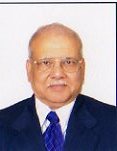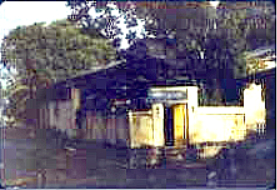Latest Contributions
Read More Contributions
Gandhi Assassination Backlash in Satara by Arvind Kolhatkar
Category:

Arvind Kolhatkar spent his childhood in Satara, and later studied at Fergusson College, Pune and the University of Pune. After getting his MA in Mathematics, he joined the Indian Revenue Service, served in the Income Tax Department for about 30 years, rose to the rank of Commissioner, and retired voluntarily. He was an Executive Director of the Bombay Stock Exchange for 3 years. He and his wife Aruna currently live in Toronto. His email address is kolhatkar@hotmail.com.
Nathuram Godse assassinated Mahatma Gandhi in New Delhi on January 30, 1948. Godse was a Maharashtrian Brahmin, like my family.
Soon, a mass anti-Brahmin madness engulfed many parts of Maharashtra, particularly the districts south of and including Pune. Perhaps this anger was the culmination of decades of tension between the Brahmins and other castes. In any case, angry mobs pillaged, burnt and looted the homes of hundreds of innocent Brahmin families, and many people were killed. All on the baseless assumption that all Brahmins were complicit in the assassination of the Father of the Nation.
I want to illustrate this well-recorded history by describing how my family suffered.

I was five years old. We lived in Satara, about 110 km south of Pune. Our home, 77 Shukrawar Peth, was located in an area in which most of the residents were non- Brahmins. We always had the most cordial relations with our neighbours\; nevertheless, we were not spared by the mobs.
On February 1, 1948, my mother was preparing to serve lunch at 1 o'clock in the afternoon. Unexpectedly, a large mob descended upon our home. My grandfather, Hari Tatya, his younger brother, the famous actor Chintamanrao Kolhatkar, my mother and we children were the only persons in the house.
The mob politely asked my grandfather, as the oldest member of the family, to leave the house along with the family. The mob wanted to burn down our home. One miscreant very quietly and in real kindness addressed me as Bala (child) and asked me to go outside, as ‘otherwise I might be hurt!'
Argument was futile. All of us came out of the house and sat across on the other side of the road. The mob systematically smashed the furniture in our home. Then they destroyed the printing press and the type in our family business next door. Next, they threw lighted balls of kerosene-soaked paper onto the wooden beams of the house.
This went on for some time. Suddenly a shout went up that the police were approaching. Without waiting to check whether this was true, the mob melted away. Our neighbours came to our help, and put out the fire with water from a nearby stream. None of us suffered any bodily harm.
The Government gave us some cash compensation and a loan for the loss of furniture and machinery. It was difficult for my family to repay the loan. In the 1950s, one of the early actions of Y.B. Chavan on becoming the Chief Minister was to write off this and similar other loans.
It may be hard to believe but there is a funny side to this story. As was common in Maharashtra those days, our daily staple was Bhakri (unleavened bread) made from Jowar, a coarse grain. I did not like Bhakri, and loved wheat chapattis, which we got only once a week, on Sundays. Those were the days of post-war shortages and food rationing. After our home was burnt, my family decided that we children should spend the next few days with another family called Agte. Though they lived just a few doors away from us, their home had not been burnt. I remember that I was unmindful of the calamity we were in. Instead, I was secretly pleased at the thought of spending a few days with the Agtes because I had a belief that they ate chapattis every day!
© Arvind Kolhatkar 2009
Comments
Add new comment